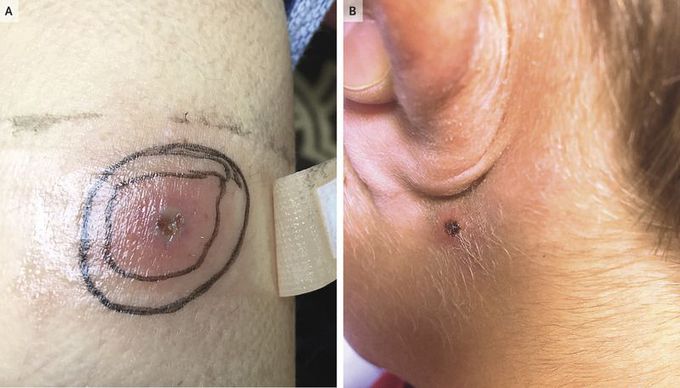


African Tick-Bite Fever
Two brothers 10 and 12 years of age presented together to the emergency department with a 2-day history of fever and headache the day after returning from a trip to South Africa, Mozambique, and Zambia. They did not recall having any tick bites. On examination, the older brother had an eschar on the calf (Panel A), and the younger brother had an eschar behind the ear (Panel B) and on the eyebrow. Both brothers had a nontender, maculopapular rash on the wrists, legs, and trunk, as well as regional lymphadenopathy adjacent to the eschars. Malaria smears and blood cultures were negative. Amoxicillin–clavulanate therapy was initiated for presumed superinfected mosquito bites; however, the finding of multiple eschars and the fact that two family members were affected aroused suspicion of African tick-bite fever. African tick-bite fever is caused by Rickettsia africae and is transmitted by ticks of the genus amblyomma, the feeding patterns of which lead to multiple eschars and clustered cases within travel groups. Doxycycline therapy was added empirically, and the fever resolved in both children within 24 hours. Doxycycline was administered for 7 days, and the eschars resolved within 2 weeks after treatment was initiated. Serologic tests for rickettsia, which were initially negative, were positive in both patients at follow-up 3 months later.

